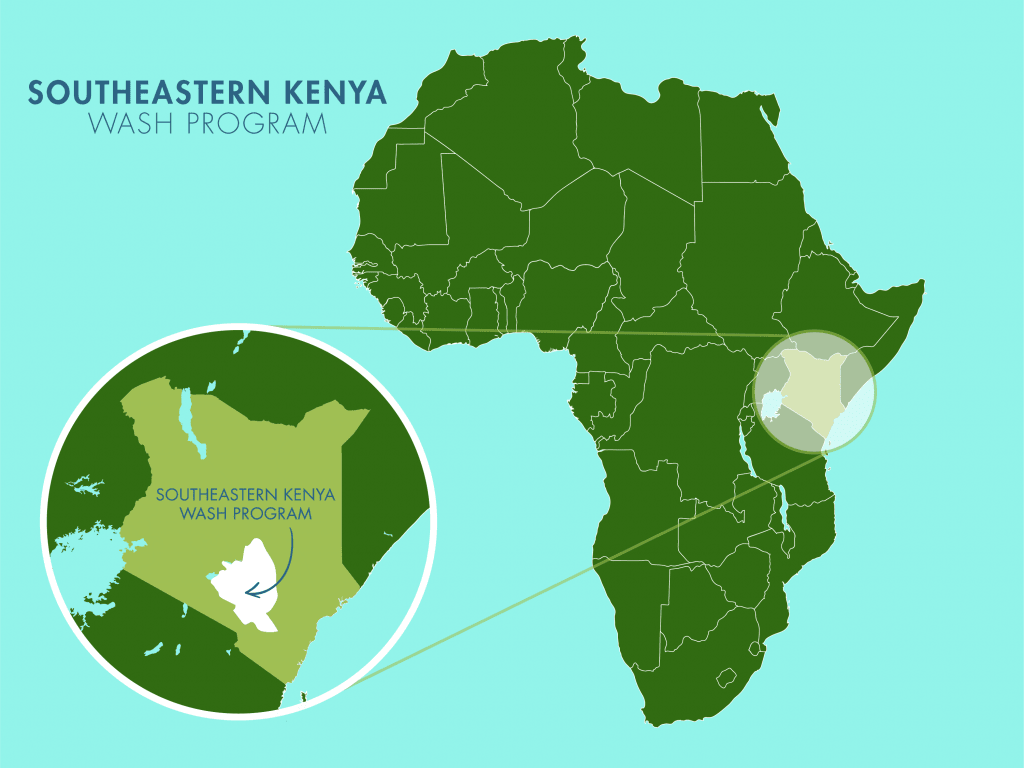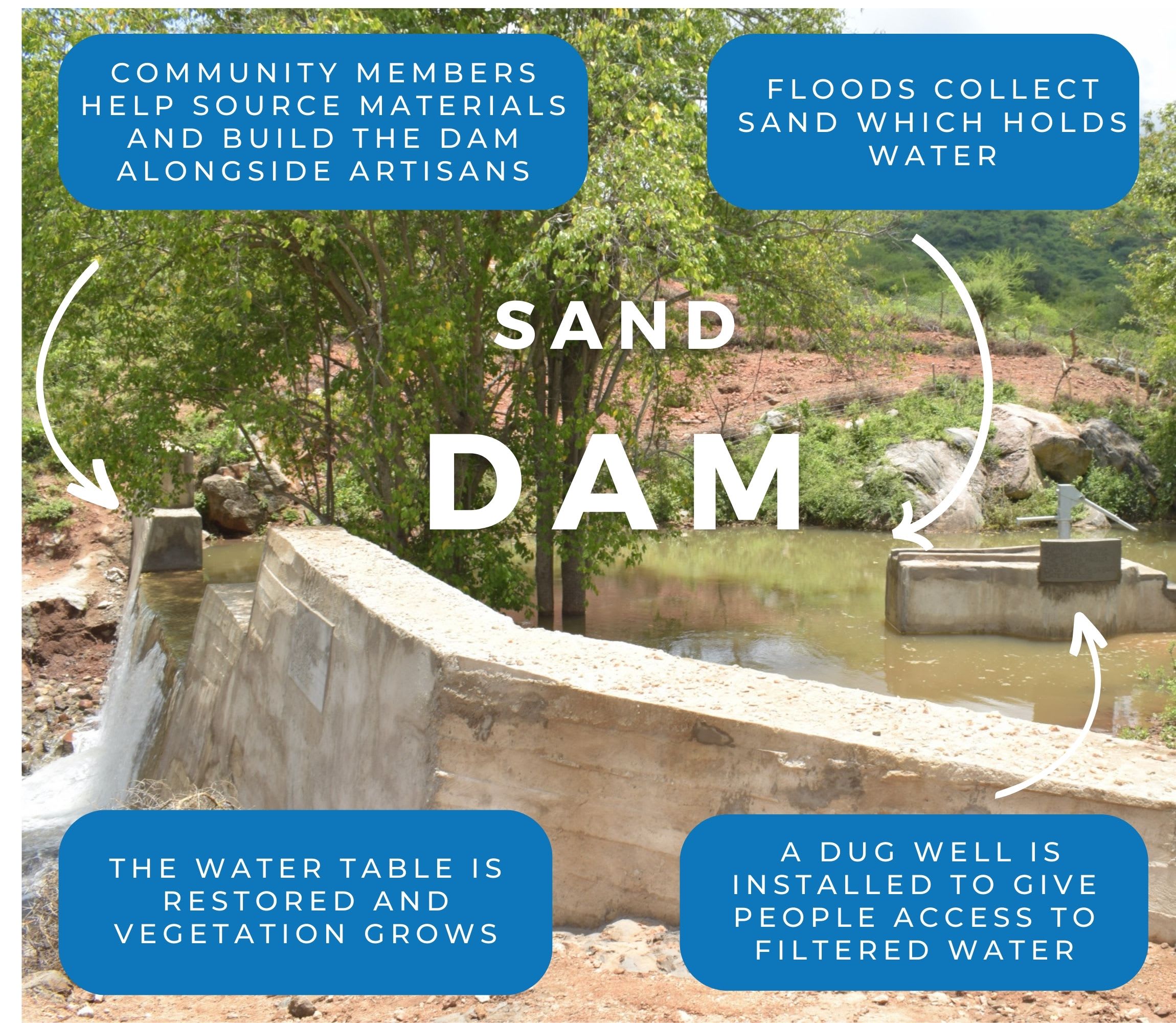In the Kwa Vindya Community, 1,500 people face a daily water crisis. For them, collecting water means a grueling two-hour trip to a contaminated open dam, the only available source of water. The journey is physically exhausting, especially under the hot sun, and often yields too little water to meet even the most basic daily needs. It's a relentless burden that drains time, energy, and health from families every single day.
"It takes 2-4 hours to fetch water from the distant earth dam, a task that is tedious and time-consuming. Residents who do not have a donkey have to use their backs, leading to leg pain and backaches," reported Field Officer Alex Koech.

However, the trip is not only demanding but also heart-wrenching, as people know the water they work so hard to collect will likely make them ill. Nevertheless, without an alternative, they have no choice but to consume it.
"The water is also easily contaminated by animal excrement, human activity, debris, and dust, which has culminated in water-related infections like typhoid, amoebiasis, and dysentery. These infections are costly to treat, given the little income that residents reap from their drought-struck farms. Adults and children who get sick, miss out on daily activities like farming, conducting hygiene, or studying. The earth dam water [level] reduces during the drought season due to evaporation and a high number of people who depend on it. Therefore, residents have to use water sparingly, which adversely affects hygiene, irrigation of crops, or even construction," Alex declared.
It is an overwhelming situation that leaves people, like 30-year-old Tredinoh Kaviu, feeling hopeless.

Tredinoh (in black) works to collect water from the dam.
"It is disheartening that we do not have clean water in our area. Although we try using various local treatment methods, it is difficult to do so every time because of the long walks and exhaustion from the journey of fetching water," she said.
"Cases of stomachaches, nausea, or vomiting commonly occur in our village. I recently had a stomachache and had to purchase some drugs from the local dispensary. I could not handle my household duties or go to the farm. I felt bad because I usually take care of things at home while my husband goes to work. I could not go to the farm on that day or fetch water for the family. One of my relatives came to let out the goats to graze and drink water," she continued.

Tredinoh prepares for the long trip home.
Tredinoh knows the importance of water, and even when she is ill, someone must still collect water; otherwise, there will be dire consequences.
"Water is life; without water, I cannot care for my family. I need water for cooking, drinking, for my animals, and for conducting hygiene at home. I would not be able to sustain my livelihood if there were no water for my crops or livestock. Life would be unbearable," she declared.
However, there are times when drought forces her hand, and she must make a difficult decision about where to ration the water she manages to collect to sustain her family. It is an impossible choice that leaves her frustrated.
"We experience several months of drought with minimal rainfall throughout the year, hence the earth dam quickly dries up since it is meant to harvest the erratic downpours. Most residents also depend on this water point to get water for domestic use, and the situation gets worse as the drought season progresses," shared Tredinoh.

She dreams of a day when she will have access to plenty of water near her home. She hopes for a day when her lack of water will no longer consume all of her time and energy, and she can focus on other things, such as increasing her farming and herding capabilities, conducting her daily chores efficiently, and having time to visit with her neighbors.
By building a sand dam in her community and an accompanying protected well near her home, her life will change. She will have access to water whenever she needs it and can build a healthier, brighter future for her and her family.
Solving the water crisis in this community will require a multifaceted system that will work together to create a sustainable water source that will serve this community for years to come.
Steps Toward a Solution
Our technical experts worked with the local community to identify the most effective solution to their water crisis. Together, they decided to construct a sand dam and a protected dug well.
Sand Dam
Sand dams are sought-after, climate-smart, and lasting water solutions providing hope and resilience to communities in arid Southeastern Kenya. Think of them like giant sandboxes constructed in seasonal rivers that would typically quickly dry up after the rainy season. Instead of holding water like traditional dams, they collect sand and silt.
When infrequent rains do come, these dams catch a percentage of the river's flow, letting most of the water continue downstream to other communities. But here's the magic: the sand they collect acts like a natural filter, holding onto water long after the river's gone dry. Then, wells are constructed nearby, creating a reliable water source even during the driest times.
And the benefits don't stop there! In communities impacted by climate change, sand dams replenish groundwater and prevent soil erosion. Even during severe droughts, the consistent water supply from these sand dams allows farmers to thrive, giving way for enough food not only for their families but also to sell in local markets.
The most remarkable aspect of sand dams is how they involve the local community every step of the way, giving them a sense of ownership and pride in solving their own water shortage and managing their own water resources.
This sand dam will be connected to a protected dug well to make the water more accessible.
Community Education & Ownership
Hygiene and sanitation training are integral to our water projects. Training is tailored to each community's specific needs and includes key topics such as proper water handling, improved hygiene practices, disease transmission prevention, and care of the new water point. Safe water and improved hygiene habits foster a healthier future for everyone in the community.
Encouraged and supported by our team's guidance, the community elects a water user committee representative of its diverse members. This committee assumes responsibility for maintaining the water point, organizing community efforts, and gathering fees to ensure its upkeep.

 Sand Dam
Sand Dam
 Rehabilitation Project
Rehabilitation Project
















